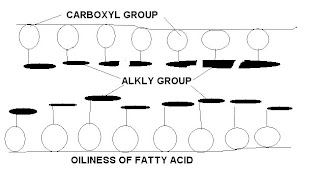Viscosity
Technically, the Viscosity of an oil is a measure of the oils resistance to Shear.
Viscosity is more commonly known as resistance to flow. If a lubricating oil is considered as a series of fluid layers superimposed on each other, the viscosity of the oil is a measure of the resistance to flow between the individual layers. A high viscosity implies a high resistance to flow while a low viscosity indicates a low resistance to flow.
Viscosity varies inversely with temperature.
Viscosity is also affected by pressure; higher pressure causes the Viscosity to increase, and subsequently the Load-Carrying Capacity of the oil also increases. This property enables use of thin oils to lubricate heavy machinery.
Load-Carrying Capacity also increases as operating speed of the lubricated machinery is increased.
Two methods for measuring viscosity are commonly employed:
Shear and Time.
(1) ShearWhen viscosity is determined by directly measuring shear stress and shear rate, it is expressed in centipoise (cP) and is referred to as the Absolute or Dynamic viscosity. In the oil industry, it is more common to use Kinematic viscosity, which is the absolute viscosity divided by the density of the oil being tested. Kinematic viscosity is expressed in centistokes (cSt). Viscosity in centistokes is conventionally given at two standard temperatures: 40 °C and 100 °C (104 °F and 212 °F ).
(2) Time
Another method used to determine oil viscosity measures the time required for an oil sample to flow through a standard orifice at a standard temperature. Viscosity is then expressed in SUS (Saybolt Universal Seconds). SUS viscosities are also conventionally given at two standard temperatures: 37 °C and 98 °C (100 °F and 210 °). As previously noted, the units of viscosity can be expressed as centipoise (cP), centistokes (cST), or Saybolt Universal Seconds (SUS), depending on the actual test method used to measure the viscosity.
Viscosity IndexThe Viscosity Index, commonly designated VI, is an arbitrary numbering scale that indicates the changes in oil viscosity with changes in temperature. Viscosity index can be classified as follows:
Low VI - below 35
Medium VI - 35 to 80
High VI - 80 to 110
Very High VI - 110 to125
Super VI - 125 to 160
Super High VI - above 160 to 200
United Bio Lube's Bio based Oils, Fluids, and Greases all have a Super High Viscosity Index in the range of 150 - 220.
A high Viscosity Index indicates small oil viscosity changes with temperature. A low viscosity index indicates high viscosity changes with temperature. Therefore, a fluid that has a high viscosity index can be expected to undergo very little change in viscosity with temperature extremes and is considered to have a stable viscosity. A fluid with a low viscosity index can be expected to undergo a significant change in viscosity as the temperature fluctuates.
For a given temperature range, say -18 to 370 °C (0 - 100 °F), the viscosity of one oil may change considerably more than another.
An oil with a VI of 95 to 100 would change less than one with a VI of 80. Knowing the viscosity index of an oil is crucial when selecting a lubricant for an application, and is especially critical in extremely hot or cold climates. Failure to use an oil with the proper Viscosity Index when temperature extremes are expected may result in poor lubrication and equipment failure.
Pour Point
The Pour Point is the lowest temperature at which an oil will flow. This property is crucial for oils that must flow at low temperatures. A commonly used rule of thumb when selecting oils is to ensure that the Pour Point is at least 10 °C (20 °F) lower than the lowest anticipated ambient temperature.
Cloud Point
The Cloud Point is the temperature at which dissolved solids in the oil, such as paraffin wax, begin to form and separate from the oil. As the temperature drops, wax crystallizes and becomes visible. Certain oils must be maintained at temperatures above the cloud point to prevent clogging of filters.
Flash Point and Fire PointThe Flash Point is the lowest temperature to which a lubricant must be heated before its vapor, when mixed with air, will ignite but not continue to burn.
The Fire Point is the temperature at which lubricant combustion will be sustained.
The flash and fire points are useful in determining a lubricants Volatility and Fire Resistance. The flash point can be used to determine the transportation and storage temperature requirements for lubricants.
Manufacturers and Toll Blenders can also use the flash point to detect potential product contamination. A lubricant exhibiting a flash point significantly lower than normal will be suspected of contamination with a volatile product. Products with a flash point less than 38 °C (100 °F will usually require special precautions for safe handling. The fire point for a lubricant is usually 8 to 10 percent above the flash point.
The flash point and fire point should not be confused with the Auto-ignition Temperature of a lubricant, which is the temperature at which a lubricant will ignite spontaneously without an external ignition source.
Acid Number or Neutralization NumberThe Acid Number or Neutralization Number is a measure of the amount of potassium hydroxide required to neutralize the acid contained in a lubricant. Acids are formed as oils oxidize with age and service. The acid number for an oil sample is indicative of the age of the oil and can be used to determine when the oil must be changed.




